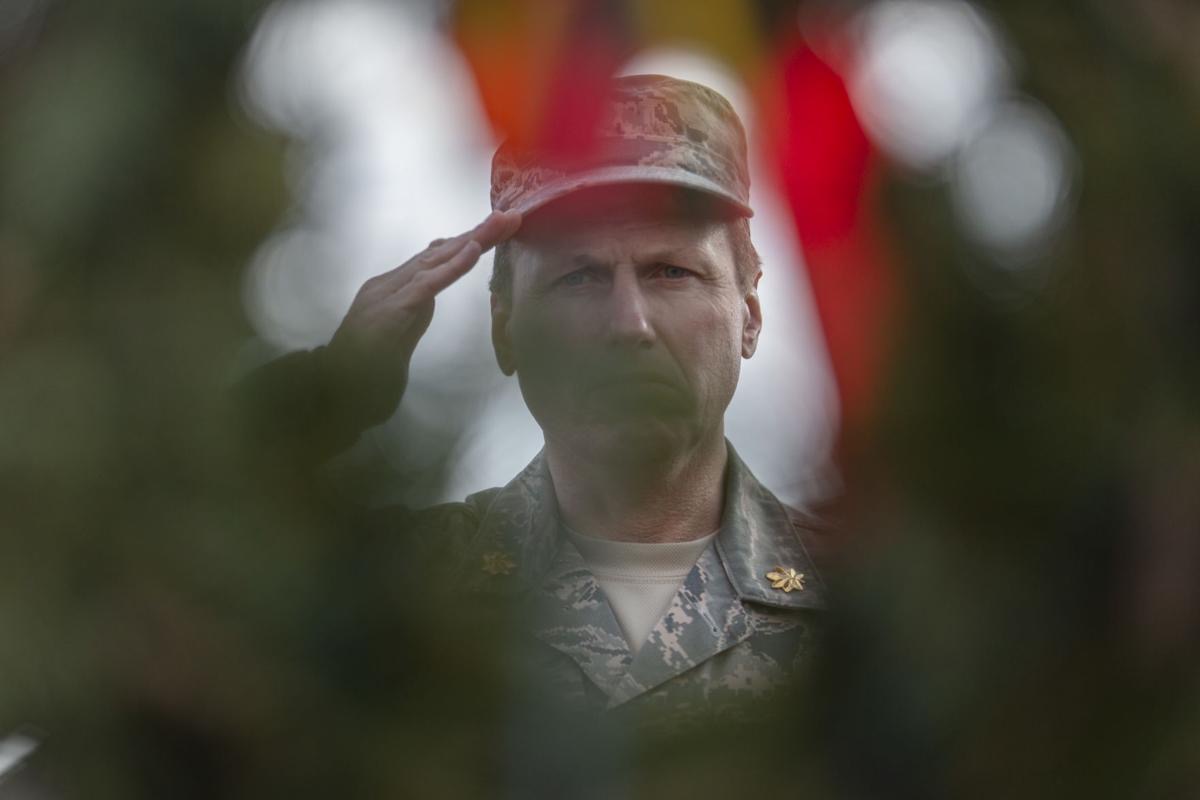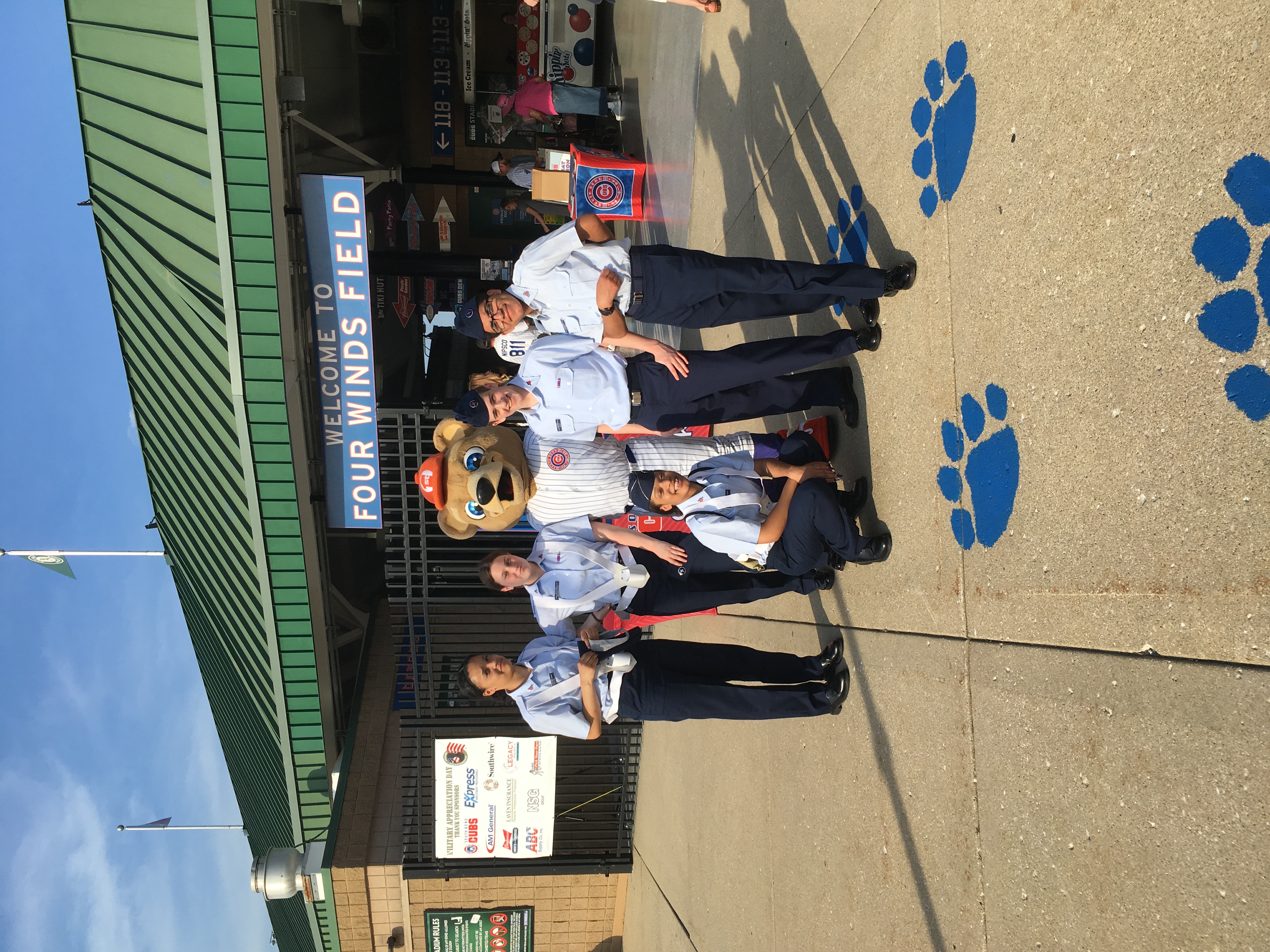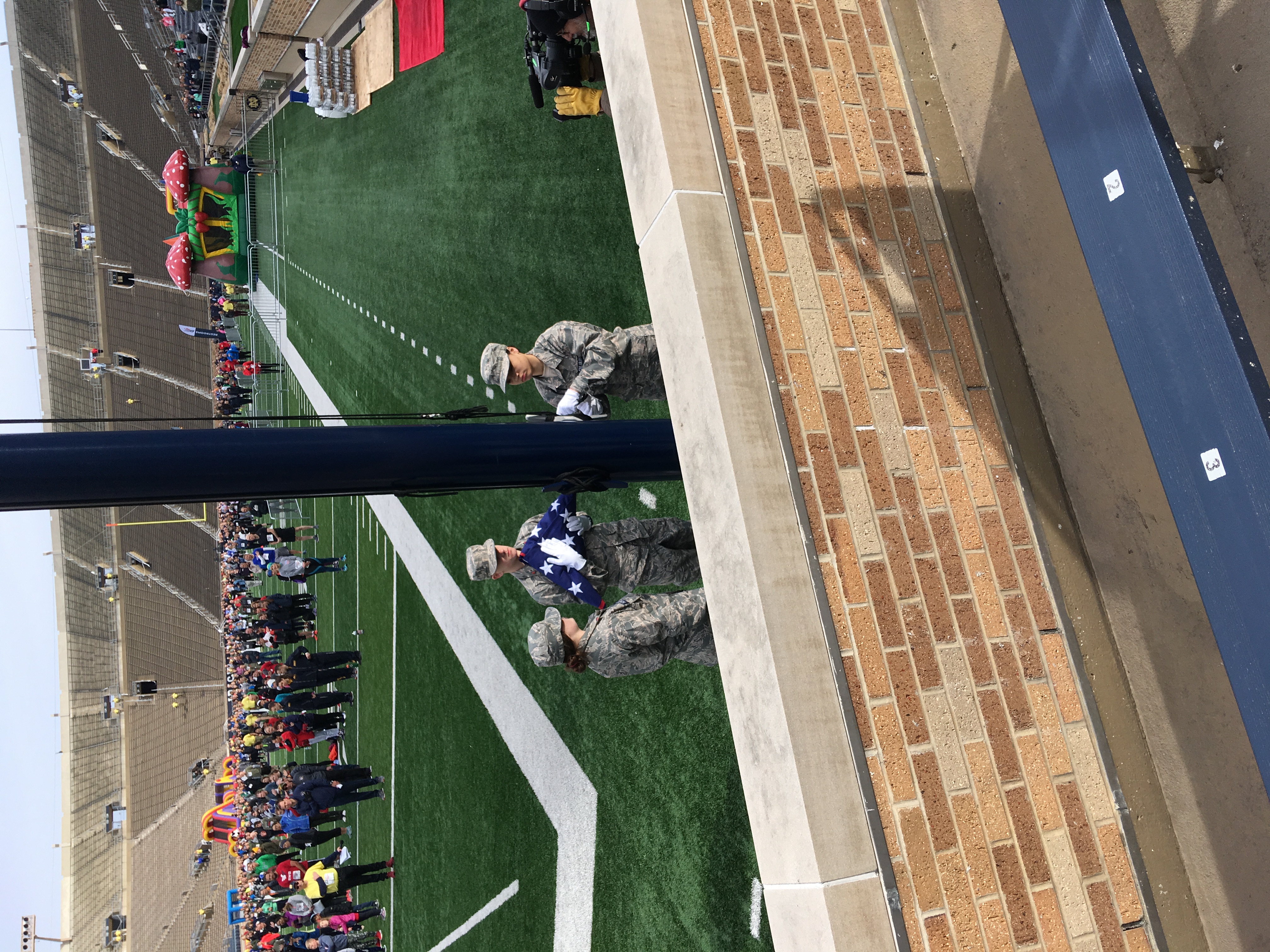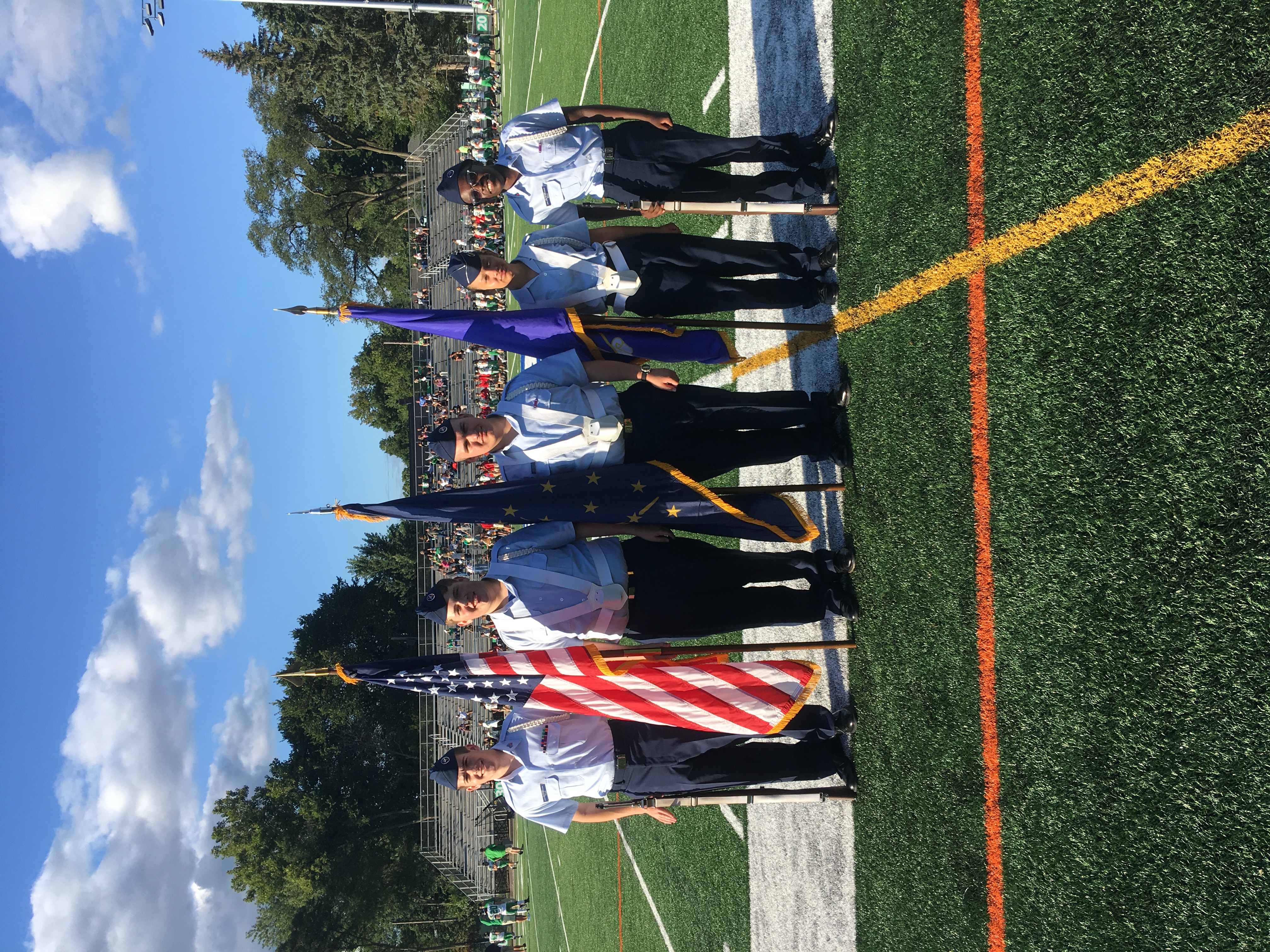Maj. Daniel Walsh gives aerospace/STEM opportunities to Indiana school squadron
Posted on May 20, 2020 at 11:41 AM by Virginia Smith
 |
| Maj. Daniel Walsh is the commander of John Adams High School Civil Air Patrol Cadet Squadron in South Bend, Indiana. |
May 20, 2020
Meet Maj. Daniel Walsh, a commander of a school squadron in the Indiana Wing, John Adams High School Civil Air Patrol Cadet Squadron in South Bend, Indiana. A retired P-3C Orion Naval flight officer, he has a passion for aviation and helping youth who otherwise might not have an opportunity to pursue STEM careers. "I work in the Aerospace Education mission area of CAP because of my previous 20-year military career in aviation," he says. "I thoroughly enjoyed flying for the U.S. Navy. As a result of my passion for aviation, I want to introduce my students and cadets to the potential career opportunities in this awesome industry through aerospace education." Walsh is an example of a member who actually started a career with CAP as an Aerospace Education Member (AEM). He then transitioned into becoming a senior member. We asked him some questions about his work with CAP and in education. His answers follow.
Tell us about yourself: your name, duty positions and unit name.
Name: Daniel Walsh, LCDR, U.S, Navy (Retired)
Rank: Major, CAP
Unit: John Adams High School Civil Air Patrol Cadet Squadron (School Unit)
Current Duty Positions: Commander, AEO, Activities Officer, Administrative Officer, Cadet Activities Officer, Communications Officer, Supply Officer, Logistics Officer, Personnel Officer, Professional Development Officer and Recruiting and Retention Officer. Also serves as assistant Finance, Training, Testing, Safety and Public Affairs officer.
How many years have you been in Civil Air Patrol?
I joined CAPJune 8, 2015. I first served as an AEM for one year then converted to major based on my retired Navy rank of lieutenant commander.
Tell us about your aerospace education background.
- B.S. Mechanical Engineering, University of Notre Dame
- B.S. Professional Aeronautics, Embry-Riddle Aeronautical University
- M.S. Manpower Systems Analysis, Naval Postgraduate School
- 3,500 Hours flying U.S. Navy P-3C Orion Maritime Patrol Aircraft
- NROTC Instructor at University of Notre Dame 2002-05 where I implemented an Undergraduate FAA Approved Introductory Flight Ground School Course
- NJROTC Instructor in a South Chicago High School 2006-10, where the graduation rate was 65%
Tell us about your career in education.
My current job is Science Department Chair (10 years) of John Adams High School, where I am a science teacher, (IB Physics, Astronomy, Meteorology, Earth Science, Math, Technology Education, Civil Air Patrol). I was named John Adams High School Teacher of the Year in 2015.
I have also been a Blue and Gold Officer, U.S. Naval Academy (Volunteer Admissions Representative/Mentor).
Previously, I was a Naval Flight Officer (1984-2004); Navy ROTC Instructor at University of Notre Dame (2002-2005); and Navy JROTC Instructor at South Chicago High School (2006-2010)
How did you become involved in Civil Air Patrol?
 |
| John Adams High cadets perform community service, such as serving as color guard at the South Bend Cubs baseball games. Here, they pose with the mascot. |
In June 2015 I discovered the CAP AEM designation and applied. That summer, I attended the Great Lakes Region AEO course at Wright-Patterson Air Force Base. While there, I was told that I could transfer my previous military rank into CAP. I subsequently became a member of the St. Joseph Valley CAP Squadron (Elkhart, Indiana). Due to my previous experience with ROTC and JROTC, I understood the significant value of a high school military program. Less than a year later I applied for a Charter for a Cadet Squadron at John Adams High School, where I was teaching. In May 2016 I received a Squadron Charter and established a Civil Air Patrol Cadet Squadron at John Adams High.
Why do you enjoy working in the aerospace/STEM mission area?
I work in the Aerospace Education mission area of CAP because of my previous 20-year military career in aviation. I thoroughly enjoyed flying for the U.S. Navy. As a result of my passion for aviation, I want to introduce my students and cadets to the potential career opportunities in this awesome industry through Aerospace Education.
Tell us about the Civil Air Patrol aerospace education programs that you use within your squadron and externally.
- We have earned the Aerospace Excellence Award (AEX) the last four years. We use AEX curricula to determine the Science Labs and Field Trips that we conduct.
- I am currently in the process of working with the School Corporation to implement a Summer STEM Camp utilizing the CAP K-6 ACE STEM Program.
- I am currently in the process of working with the School Corporation to implement the CAP K-6 ACE STEM Program in our K-6 schools
What are some other aerospace education programs you use in your squadron?
- This year we joined the Team America Rocketry Challenge and received a $2,500 Title I Grant to participate in experimental rocketry
- I utilize the FAA Introductory Ground School Curriculum that I developed at Notre Dame to introduce cadets to aviation
- I am a coach on our Science Olympiad Team which finished in 6th, 5th, and 6th place in the State of Indiana the last three years (25% of team is comprised of cadets)
- I have implemented an academic elective called Introduction to Flight in the School Corporation Science Curriculum
- I have helped the School Corporation develop a 2-year Aviation Career Technical Education Program
What is the best advice you have for working with AEMs?
You must have a passion for what you are doing. Your students and cadets will know if you do not. There is a wealth of CAP Aerospace STEM material that you can, in turn, use to excite your passion for aerospace education in your cadets. As a high school physics teacher I have found that the best way to do this is by using a hands-on scientific inquiry approach to aerospace education. Not only does it increase their cognitive abilities and deductive reasoning, but it also demonstrates the applicability to everyday use in their life.
What is the best advice you have for a new AE Officer working with cadets?
You must like working with youth. The best way is to establish professional relationships with them showing that you care about them and their career development.
Do you have any suggestions for how to conduct outreach in schools (working with students and recruiting AEMs) These can be bulleted items.
Approach a school corporation and offer to:
- Become a coach on their Science Team
- Offer to teach an Aerospace Module in a class
- Help implement a CAP K-6 ACE STEM Program in their primary and mIddle schools
- Help implement a Civil Air Patrol Cadet Program in their high school
Please tell an anecdote (or two) of a rewarding experience working with cadets and/or students or teachers:
Working with students in the Civil Air Patrol Cadet Program has been extremely rewarding from a number of perspectives. First, from the outset four years ago, I have taken the approach that the Civil Air Patrol Cadet Squadron provides the greatest potential for future growth in the Civil Air Patrol. For example, the John Adams Civil Air Patrol Cadet Squadron has enjoyed influencing 20 or more cadets per year. Some of these are cadets who, due to their socio-economic status, would otherwise not have had an opportunity to participate in the Civil Air Patrol. Second, my relationship with cadets in introducing them to aerospace education has helped foster educational and career opportunities they otherwise would not have had. Third, through my previous relationship with the AFROTC Unit at Notre Dame and other local military organizations, our cadets have enjoyed numerous opportunities to serve their community.
Finally, my most memorable achievement with a student involved one whom I mentored through the Navy ROTC scholarship application process. While going through high school, he was working 40 hours per week and accounting for a significant part of his family's income. When he left for college, so did his family's income. When he returned that first fall break, he found, unbeknownst to him, that his family had moved back to North Carolina to be with family. Apparently, his parents were so ashamed to tell him that they could not afford to live there without him, so they up and left without telling him. Today, he is a successful commissioned officer in the United States Navy.
Is there anything else you’d like to add for this spotlight on an AE Officer?
I implemented a Civil Air Patrol Cadet Squadron in John Adams High School to encourage annual involvement in aspects of school and community leadership, including:
- Notre Dame Storm the Stadium to raise money for Veterans (April 25)
- Armed Services Day (May 15)
- Memorial Day Parade (May 30)
- Food Bank Food Drive (June 10)
- 9/11 Flag Folding Celebration (Sept. 11)
- Veteran's Day Celebration (Nov. 11)
- Christmas Fundraiser for Veterans Homeless Center (Dec. 10)
- Wreaths Across America (Dec. 15)
 |
 |
| Cadets raise the flag at Notre Dame Stadium in an event to honor veterans. | Cadets serve as color guard at local community events. |



